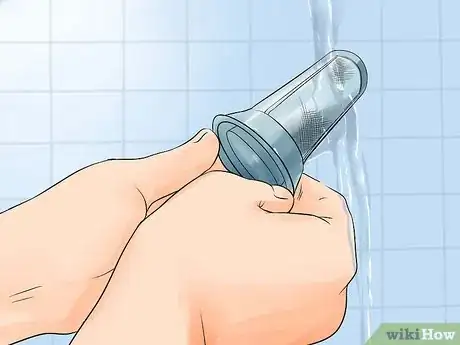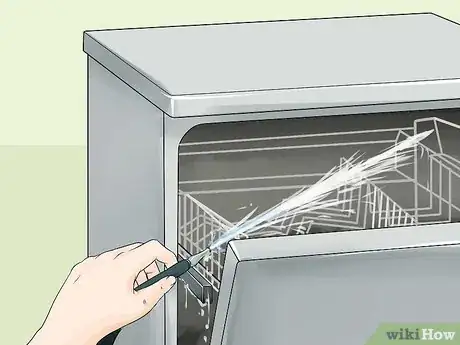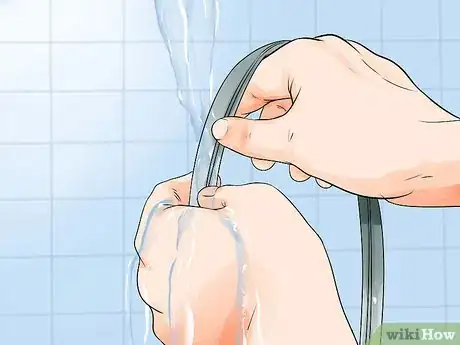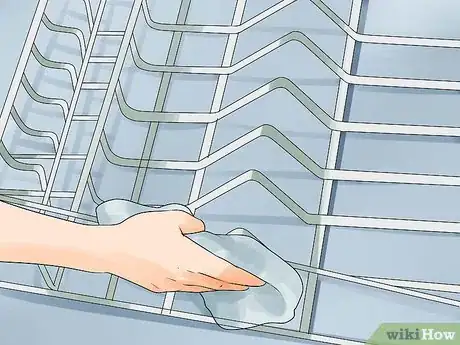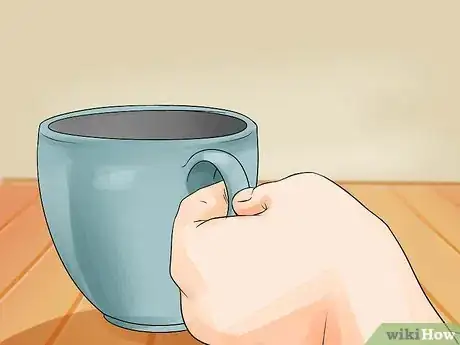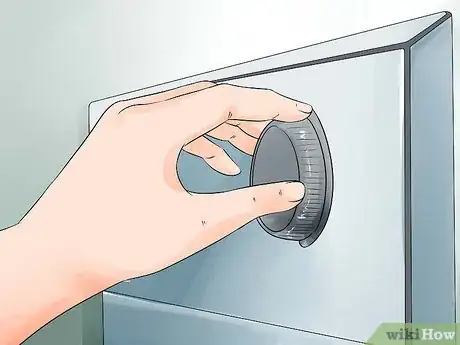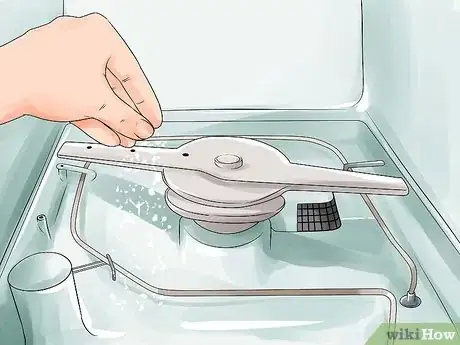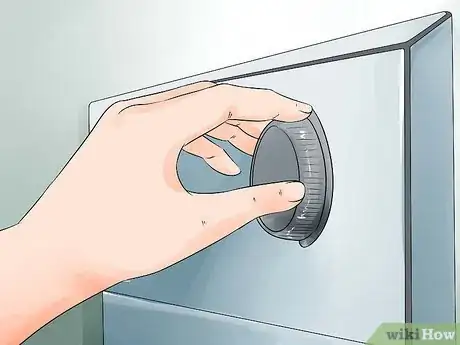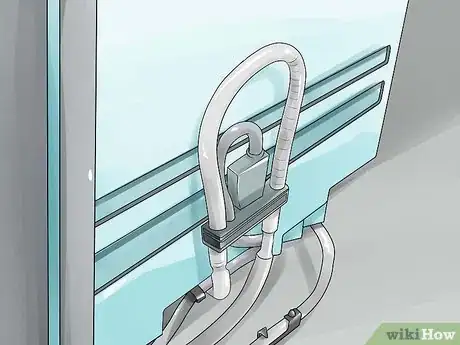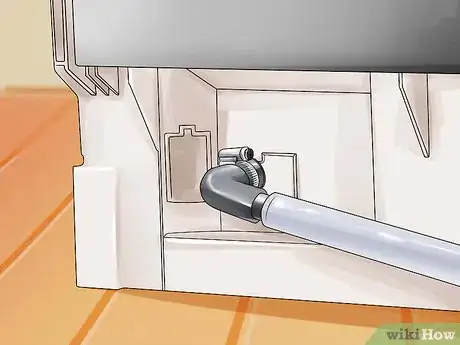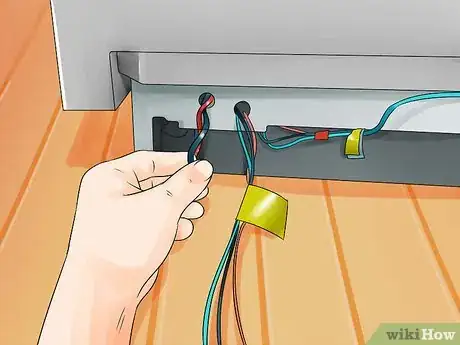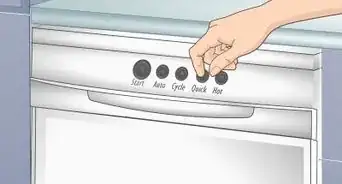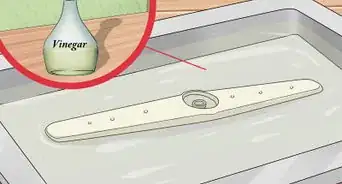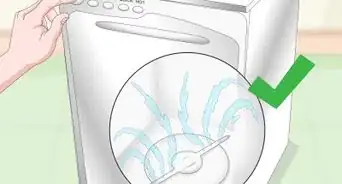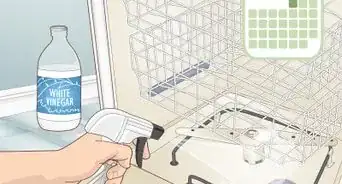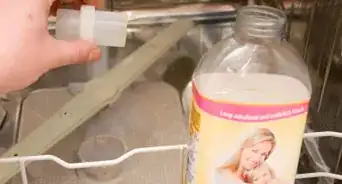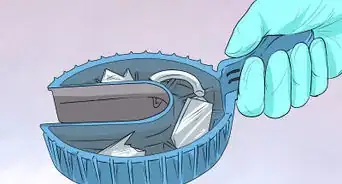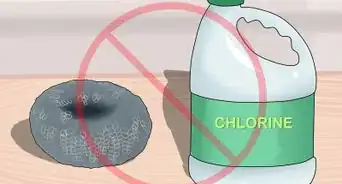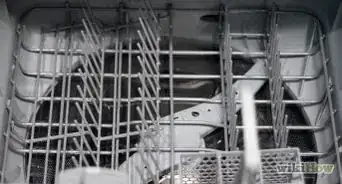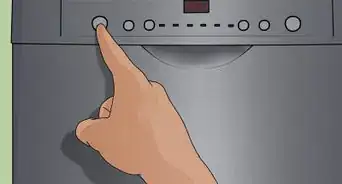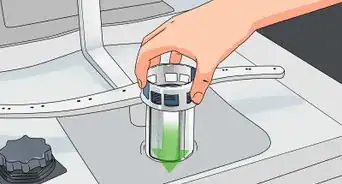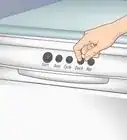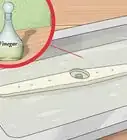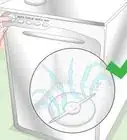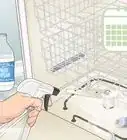This article was co-authored by Michelle Driscoll, MPH. Michelle Driscoll is the Owner of Mulberry Maids, which is based in Fort Collins, Colorado. With five years of experience, her business specializes in cleaning homes and small offices. She holds a Masters in Public Health from the Colorado School of Public Health. Additionally, Mulberry Maids has an A+ rating from the Better Business Bureau.
There are 7 references cited in this article, which can be found at the bottom of the page.
wikiHow marks an article as reader-approved once it receives enough positive feedback. This article received 19 testimonials and 100% of readers who voted found it helpful, earning it our reader-approved status.
This article has been viewed 1,050,301 times.
Your dishwasher is the last place you want strange or repulsive odors. Yet many dishwashers accumulate grime and develop the smells of mold or mildew. This article will explain how you can clean the dishwasher and remove the offensive odor.
Steps
Scrubbing Your Dishwasher
-
1Clean the drain filter. No part of your dishwasher is more likely to responsible for strange odors than the drain filter. Food particles can collect here, and over time in a warm, moist environment they can become disgusting.[1]
- There will probably be a cylindrical, detachable filter through which all of the water drains.
- In order to access the filter, remove the bottom rack, then twist out the filter.
- Wash the filter with soap and hot water in your sink. It may be difficult to reach all of the interior sections of it with a rag, so you may want to use a bottle brush.
-
2Wash the inside of the door and the interior walls. Smells may also come from grime that has accumulated throughout the inside of the dishwasher. You must scrub out the entire unit.[2]
- Remove all racks from the inside of the dishwasher. These will only get in your way when washing the interior of the dishwasher.
- Use a rag or brush and hot soapy water to scrub out the interior of the dishwasher. If grime has accumulated and is not easy to remove, consider also using some kitchen-safe household cleaners to help you scrub it out.
Advertisement -
3Wash the door gasket. The seals of the dishwasher door can also accumulate moisture and grime and must be washed.
-
4Scrub the dishwasher racks in your sink. Though they are the unlikeliest cause of smell, you should make sure to rule out all of the simplest possibilities before you invest too much time and energy in the problem.
Removing Smell with Vinegar and Baking Soda
-
1Place 1 cup (240 mL) of distilled white vinegar in the top rack of the dishwasher. Despite its own smell, the acid in vinegar is one of the most potent smell-removing agents. Additionally, as it dries the smell of vinegar dissipates quickly.[3]
- Make sure the dishwasher is empty when you attempt to clean it in this way.
- If you don't like the smell of vinegar, add a few drops of an essential oil to the vinegar.[4]
-
2Run the dishwasher for a full cycle. The vinegar will be blasted all over the interior of the dishwasher, and that is precisely the intention. The acids in the vinegar will help break down any residues that remain in the interior of your dishwasher.[5]
-
3Sprinkle a cup of baking soda over the bottom of the dishwasher. Baking soda is another well-known odor neutralizer, and following the vinegar shower with a rinse of baking soda has become a popular (and organically approved) solution to cleaning and smell-removal problems.[6]
-
4Run an additional cycle. This time the dishwasher should be run one of the shortest cycles available, and in order to dissolve all of the baking soda the water should be the hottest it can be. After this, the dishwasher should be clean and fresh smelling.
Troubleshooting the Problem
-
1Check the troubleshooting section of your dishwasher's manual. Most dishwashers will come with manuals that include troubleshooting sections that include specific cleaning instructions in just this kind of situation.
- Many dishwasher manuals are also available online for free. Websites such as ManualsOnline.com and ManualsLib.com are just a few of the many sites that have downloadable manuals for a variety of home appliances.
-
2Check the drain hose for obstructions. Especially check into this if there is water in the bottom of your dishwasher at the end of a cycle. If the drain hose has become bent or restricted, the flow of water can be limited and built-up water can become musty in the hose.
- If the dishwasher can be pulled away from the wall, do so to check the hose.
- Most other dishwashers will be located next to the kitchen sink will have drain hoses that connect to the same kitchen drain pipe. You can detach the hose at whichever end is easier to access in order to inspect it.
-
3Make sure the dishwasher drain hose is installed at the correct point. Waste water from the sink can drain through the hose into the dishwasher if the drain hose is not looped up from the drain pipe before it is run to the dishwasher. The weight of a sink-full of water can push water back up through the dishwasher drain hose. If this appears to be a problem, raise the loop of the drain hose higher.
-
4Check the electrical connection. Examine the junction box behind the kick plate under the door of the dishwasher. A poor connection can produce an odor and is a fire hazard. Other problems can come from shorts in any of the electrical lines or a dysfunctional heater unit. If the dishwasher appears to have electrical problem, unplug it and call an electrician to fix the problem.[7]
Expert Q&A
Did you know you can get expert answers for this article?
Unlock expert answers by supporting wikiHow
-
QuestionHow do I get mold out of my dishwasher?
 Michelle Driscoll, MPHMichelle Driscoll is the Owner of Mulberry Maids, which is based in Fort Collins, Colorado. With five years of experience, her business specializes in cleaning homes and small offices. She holds a Masters in Public Health from the Colorado School of Public Health. Additionally, Mulberry Maids has an A+ rating from the Better Business Bureau.
Michelle Driscoll, MPHMichelle Driscoll is the Owner of Mulberry Maids, which is based in Fort Collins, Colorado. With five years of experience, her business specializes in cleaning homes and small offices. She holds a Masters in Public Health from the Colorado School of Public Health. Additionally, Mulberry Maids has an A+ rating from the Better Business Bureau.
Founder, Mulberry Maids
-
QuestionDo I use a soap tablet as usual when using the vinegar method?
 Community AnswerThere is no need. The alkaline in the tablet will likely negate the acidic nature of the vinegar.
Community AnswerThere is no need. The alkaline in the tablet will likely negate the acidic nature of the vinegar. -
QuestionDo I put the cup the right side up? How does the vinegar get out?
 Community AnswerYes, you do. If you placed it upside down, the vinegar would fall to the bottom of the dishwasher. The movement of water in the dishwasher will move the vinegar out of the cup and spread it throughout the container.
Community AnswerYes, you do. If you placed it upside down, the vinegar would fall to the bottom of the dishwasher. The movement of water in the dishwasher will move the vinegar out of the cup and spread it throughout the container.
References
- ↑ http://dishwashers.reviewed.com/features/why-you-need-to-clean-the-filter-in-your-new-dishwasher
- ↑ http://www.repairclinic.com/Dishwasher-Maintenance-Tips
- ↑ http://www.diy-household-tips-tricks-and-hints.com/deodorize-with-vinegar.html
- ↑ https://www.bobvila.com/articles/smelly-dishwasher/
- ↑ http://www.onegoodthingbyjillee.com/2012/02/how-to-clean-your-dishwasher.html
- ↑ http://greenopedia.com/eliminate-odors-naturally/
- ↑ https://www.firefighternation.com/firerescue/investigating-strange-odors/
About This Article
If your dishwasher is starting to smell, cleaning the drain filter is a good first step. Remove the bottom rack and twist out the filter, then wash the filter with dish soap and warm water. Use a bottle brush to scrub out any hard-to-reach spots. Take all the racks out of the dishwasher and scrub the inner walls and door with a rag or brush soaked in hot, soapy water to remove built-up grease and grime, then clean the racks in your sink. Don’t forget to wipe down the door gasket, which can also accumulate smelly dirt and food particles. To freshen up your whole dishwasher quickly, set 1 cup (240 mL) of white vinegar in the top rack and run a full cycle with no other dishes in the washer. Then, sprinkle a layer of baking soda over the bottom of the dishwasher and run it again. These two common household products will help break down lingering odors and grease. If your dishwasher still doesn’t smell right, it could have an issue such as a blocked drain hose or a poor electrical connection preventing it from running properly. You may need to call a professional to take care of the problem. To learn about troubleshooting the source of the bad smells, read on!
